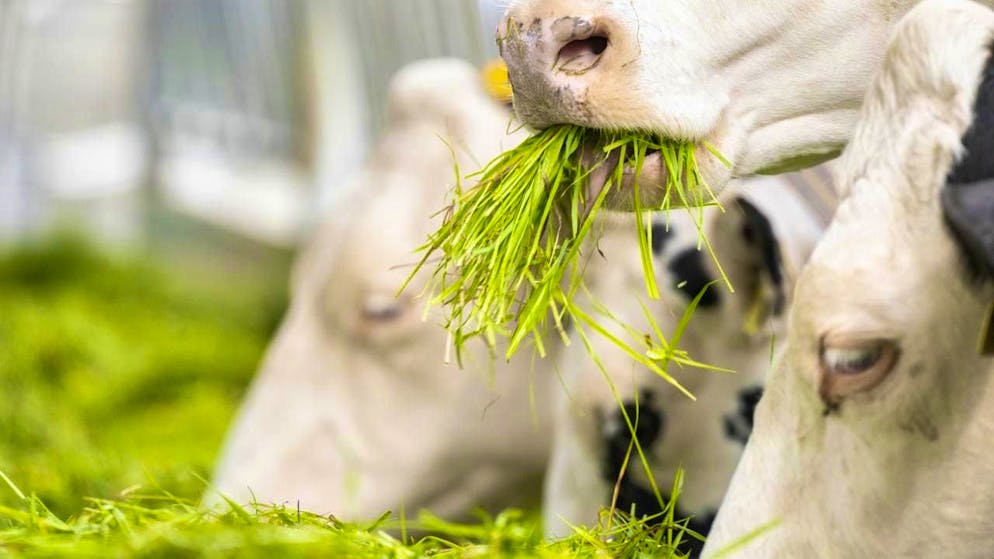
The seal of origin stipulates a certain proportion of fresh grass in the feed. (archive picture)
Keystone
Cows in France’s low mountain ranges are grazing less due to increasing drought. As a result, the quality of the milk and the cheese produced from it is suffering, according to a study.
The AOP seal of origin stipulates that cows must be fed a certain proportion of fresh grass. If this is not adhered to, the quality and taste of the cheese is also impaired, according to a study by the state agricultural research institute Inrae.
Cows were fed pasture grass, hay, a combination of pasture grass and maize silage and maize silage alone. The results: The more grass the cows eat, the higher the content of omega-3 fatty acids in milk and cheese, which are beneficial for human health.
And when cows eat grass, the cheeses are meltier, yellower and more aromatic than when cows eat little or no grass. The cheeses then have a less pronounced flavor and are whiter and firmer.
Trials with grass substitutes
In the drought year of 2022, the only emergency solution for some producers was to obtain hay from farmers in neighboring regions less affected by drought. Others are considering regularly replacing the grass on their pastures so that the cows have better feed. But this requires considerable investment.
On an experimental farm in the Ardèche, the cultivation of more drought-resistant plants such as sorghum, chicory and ribwort plantain, which have no effect on the taste and composition of the cheese, is also being tested as a substitute for pasture grass.

